Monar Jonban & Fire Altars
A Tomb near the Zayandeh Rud River
On the banks of the Zayandeh Rud River in the western part of Isfahan, there is a monument that has amazed its visitors for the past five decades. Monar Jonban, literary meaning Shaking Minarets, was built outside of Isfahan in one of the villages called Karladan. Today however, with the increasing expansion of Isfahan, Manar Jonban is considered a part of Nasr Abad neighborhood. Actually, ManarJonban was built a few hundred meters north of Zayandeh Rud. Notably, Monar Jonban is the tomb of Amo Abdullah Karladani, one of the mystic figures of the seventh century AH. During his time, Sultan Mohammad Khodabandeh (Al-Jaito) was one the Ilkhanid Sultans of the time. Also, according to its structural features, the construction of the building dates back to Ilkhanid times. But, according to other resources, its minarets were designed in Safavid era and were added to the building. The height of the building is ten meters from the ground and the height of the minarets reaches 7.5 meters.

The Miracle of the Shaking Minarets
As the name implies, the minarets of Monar Jonban are movable while they can also maintain still. These shaking of the minarets of this building was the very thing that used to amaze its visitors in the past. They were amazed to see how minarets can shake. Interestingly, when one minaret was shaken, the other one began to shake as well. They considered this miracle to be related to the will of the sheikh who was buried there. In other words, before finding out the scientific reason behind this, they used to believe in the miracle of the sheikh.
When a minaret is shaken, not only does the other minaret shake, but the whole building begins to vibrate. But this vibration is not visible to the naked eye. To detect this slight vibration, a glass of water is placed on the tomb of the sheikh so that even a small vibration can be detected. But the shaking of the minarets is quite obvious. However, a bell that has been attached to both minarets make their shaking more tangible.
The Science behind Monar Jonban
The scientific reason for the shaking of the minarets of the Monar Jonban is the phenomenon of intensification. According to some studies and experiments, if the two minarets are exactly symmetrical, this phenomenon can occur if the physical proportions are observed. Moreover, the materials used in the construction of this building (such as clay) are much important for this phenomenon. The grooves between the minarets and the main building saves the building from getting damaged by shaking the minarets. Also, the wooden coils used in the parts of the minarets help to intensify this phenomenon. Despite the fact that several hundred years have passed since the construction of the minarets, the main function of the building is still preserved. However, several excavations in recent decades have caused minor damages to Manar Jonban.
Notably, the existence of buildings with shaking minarets goes further than Monar Jonban. In other cities of Iran and even in Iraq and Saudi Arabia, buildings with this feature have been built. Manar Jonban was registered as a national heritage in 1321 AD. Accordingly, measures have been taken to preserve this historical monument since then.
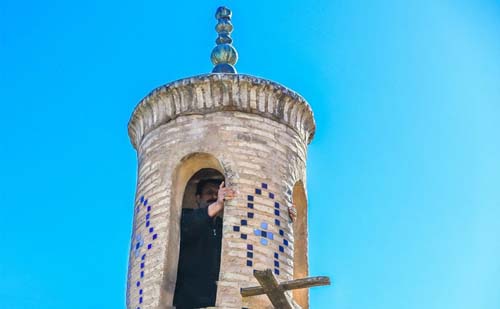
Fire Altars; a Palace, a Temple, or a Castle
About one and a half kilometers of Monar Jonban a mountain with 100 meters of height can be seen. This mountain probably had a special sanctity during the Elamite and Sassanid eras. On the bank of Zayandeh Rud River and on the top of the mountain, a circular monument can be seen. At the foot of the mountain, there are remnants of rooms with thousands years of antiquity. These rooms have been largely damaged and destroyed. The inside of the Fire Altar looks much simple and without decorations.

Water and Fire
The ancient religion of the Persians was Zoroastrianism. This religion reached its peak during the Sassanid era. In fact, the Sassanids declared Zoroastrianism as their official religion. Since then, the power of Zoroastrian clerics has increased day by day. Fire Temples and Fire Altars were built in different parts of Iran. The three flames of eternal fire, the central fire flames of the Zoroastrians, were taken to three important Fire Temples. These flames were never put out. The difference Between Fire Temples and Fire Altar was that the Fire Altars were usually built on a high hill. The fire in the Fire Temples was always burning. But in the Fire Altars, a small flame of the sacred fire was probably brought there for a period of time only for religious ceremonies. Fire Altars were usually built in the form of circular, octagonal or rectangular spaces. They were closed spaces with dome-shaped roofs. Isfahan’s Fire Altar is no exception to this rule. But now, with the collapse of the roof and its small dome, only a small part of it remains.
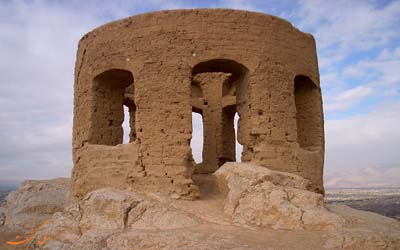
The main building of this Fire Altar is attributed to the time of the Elamites according to the excavations and scientific studies as well as the similarities with other examples around Iran. Water was considered as an important element in the religion of Mehr, which was the religion of the inhabitants of the Iranian plateau before the arrival of the Aryans. Even after the Sassanids and the establishment of the Zoroastrian religion as the official religion, the element of water was still of special importance. In Zoroastrian rituals and their prayers, water played an integral part. Accordingly, they used water for bathing and washing their bodies before the ceremony. The construction of this complex near the Zayandeh Rud River and the direct and effortless access to water has convinced archaeologists to consider the use of this building and the adjacent buildings as religious sites and places of worship. They attributed the other extensions such as the triple fence and the rooms on five separate floors to the changes of the Sassanid era. Also, some consider them the remains of a palace or castle. This theory has been severely criticized due to the fragile structure of the complex and its adjacent buildings as well as the used materials in them.
To visit this Fire Altar, the visitors must climb a 100-meter’s high mountain .The access route is relatively easy, but there is no stairway to reach the main building of the Fire Altar. Despite being surrounded by tall building, this Fire Altar still retains its grandeur on top of a mountain. This mountain is one of the symbols of the ancient Temples/Altars in Isfahan.
Monar Jonban FAQa
Everyday 09:00 – 11:00 14:00 – 17:00
Monar Jonban and Nazhvan park
(10 km) from Narcis B&B (about 25 min driving )


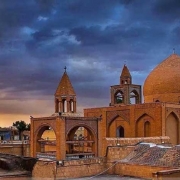

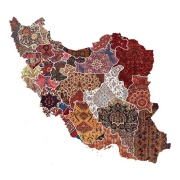
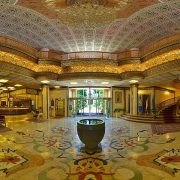
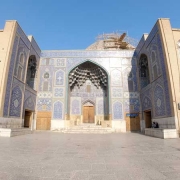
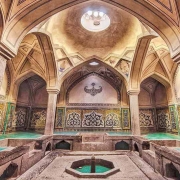





Leave a Reply
Want to join the discussion?Feel free to contribute!